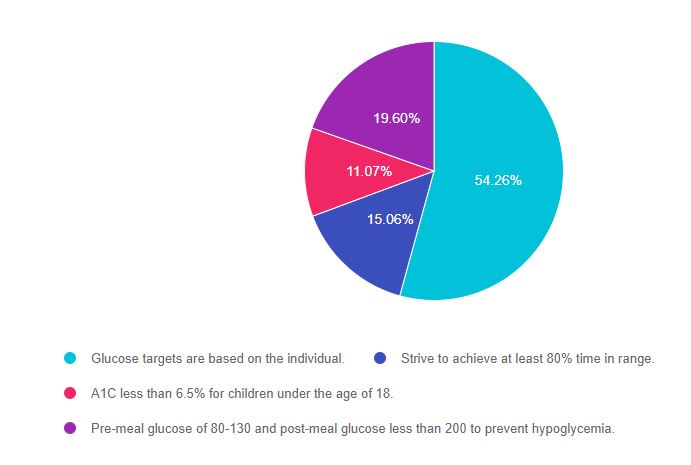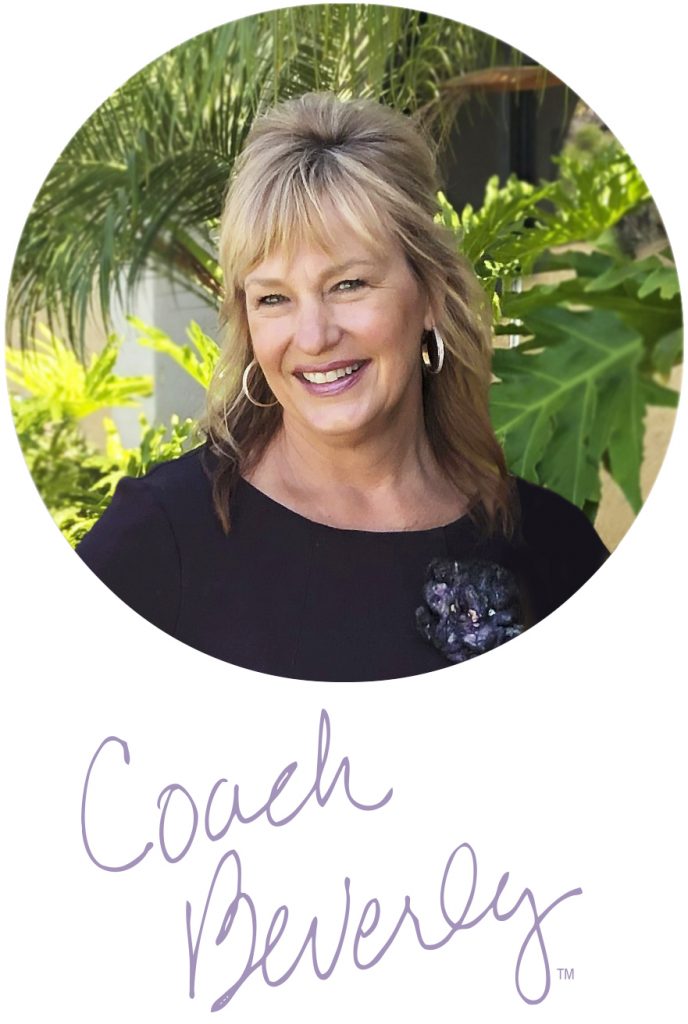Question of the Week | What are Pediatric Glucose Targets?

RT is 12 years old and has a new diagnosis of type 1 diabetes.
Based on the ADA Standards of Care, what is the most accurate statement regarding glycemic goals?
- Glucose targets are based on the individual.
- Strive to achieve at least 80% time in range.
- A1C less than 6.5% for children under the age of 18.
- Pre-meal glucose of 80-130 and post-meal glucose less than 200 to prevent hypoglycemia.
Click here to test your knowledge!
Want to learn more about this topic? Enroll in our
Level 2 | From Tots to Teens Diabetes Standards | 1.5 CEs

This course includes updated goals and guidelines for children living with type 1 or type 2 diabetes. This course discusses the special issues diabetes educators need to be aware of when working with children with diabetes and their families.
We discuss the clinical presentation of diabetes, goals of care, and normal growth and development through the early years through adolescence. Strategies to prevent acute and long term complications are included with an emphasis on positive coping for family and child with diabetes.
Topics include:
- Discuss the goals of care for Type 1 and Type 2 Kids with Diabetes
- State Strategies to prevent acute and chronic complications
- Discuss the importance of positive psychosocial adjustment and resources
See Full Calendar for upcoming webinars and Virtual Courses.
Can’t make it live? All paid registrants are guaranteed access to the video presentation, handouts and podcasts.
Sign up for Diabetes Blog Bytes – we post one daily Blog Byte from Monday to Friday. And of course, Tuesday is our Question of the Week. It’s Informative and FREE! Sign up below!
[yikes-mailchimp form=”1″]Accreditation: Diabetes Education Services is an approved provider by the California Board of Registered Nursing, Provider 12640, and Commission on Dietetic Registration (CDR), Provider DI002. Since these programs are approved by the CDR it satisfies the CE requirements for the CDCES regardless of your profession.*
The use of DES products does not guarantee the successful passage of the CDCES exam. CBDCE does not endorse any preparatory or review materials for the CDCES exam, except for those published by CBDCE.
Rationale of the Week – Less than 50% chose best answer | New Type 2, Action Needed?

For our June 1st Question of the Week, only 45% of respondents chose the best answer. We want to “take a closer look” at this question and figure out how to drill down to discover the best response.
Before we start though, if you don’t want any spoilers and haven’t tried the question yet, you can answer below: Answer Question
Question: JR is 43 years old with newly discovered type 2 diabetes.
According to the ADA Standards, which of the following actions need to be taken with a new type 2 diabetes diagnosis?
Answer Choices:
- Hepatitis B Vaccine.
- Screening for prostate cancer.
- Referral to podiatry.
- Antibody testing to confirm the diagnosis.

As shown above, the most common choice was option 1, the second most common answer was option 3, then option 4, and finally option 2.
Getting to the Best Answer
If you are thinking about taking the certification exam, the content of this practice test question will set you up for success. The exam will present questions that require test takers to be familiar with preventive care measures, especially suggested vaccinations based on age and risk profile.
Answers & Rationale
Answer 1 is correct, 45.48% chose this answer, “Hepatitis B Vaccine.” CONGRATS, this is the BEST answer. According to the ADA Standards of Care (see below), people with diabetes who are 18-59 years of age need protection against hepatitis infection. Since people with diabetes may share glucose checking devices and may have less hearty immune systems, they are at higher risk of getting Hepatitis B. Getting the 2-3 dose series if not previously vaccinated, offers important protection.
Answer 2 is incorrect, 4.68% of you chose this answer, “Screening for prostate cancer.” According to the ADA Standards, a new diagnosis of type 2 diabetes does not require screening for prostate cancer. In addition, according to the consensus statement on Diabetes and Cancer, men with diabetes are not at higher risk of prostate cancer. However, people with diabetes are at higher risk of pancreas, liver and breast cancer, so regular screenings for these types of cancers is indicated.
Answer 3 is incorrect, 26.61% of you chose this answer, “Referral to podiatry.” This is answer is juicy, but we don’t have enough details in the question to support referral to a podiatrist. Not everyone with new diabetes is referred to podiatry for lower extremity care. Podiatry referral is based on a careful lower extremity assessment coupled with an indication that this person is at higher risk of complications (ie ulcerations, severe calluses, risk of injury when cutting toenails, loss of protective sensation, etc).
Answer 4 is incorrect, 23.23% of you chose this answer, “Antibody testing to confirm the diagnosis.” Another juicy answer. For most people with new type 2 diabetes, the clinical presentation coupled with family history and ketone status is usually enough to determine the type of diabetes. If the question hinted that this person might have type 1 (ie history of celiac or thyroid disease, positive ketones, BMI of 21 etc) then, the provider may want to evaluate for the presence of antibodies.
We hope you appreciate this week’s rationale! Thank you so much for taking the time to answer our Question of the Week and participate in this fun learning activity!
Sign up for Diabetes Blog Bytes – we post one daily Blog Byte from Monday to Friday. And of course, Tuesday is our Question of the Week. It’s Informative and FREE! Sign up below!
[yikes-mailchimp form=”1″]Accreditation: Diabetes Education Services is an approved provider by the California Board of Registered Nursing, Provider 12640, and Commission on Dietetic Registration (CDR), Provider DI002. Since these programs are approved by the CDR it satisfies the CE requirements for the CDCES regardless of your profession.*
The use of DES products does not guarantee the successful passage of the CDCES exam. CBDCE does not endorse any preparatory or review materials for the CDCES exam, except for those published by CBDCE.
Rationale of the Week | What are Pediatric Glucose Targets?

For our June 15th Question of the Week, only 54% of respondents chose the best answer. We want to “take a closer look” at this question with the aim for 100% correct responses the next to go around.
Before we start though, if you don’t want any spoilers and haven’t tried the question yet, you can answer below: Answer Question
Question: RT is 12 years old and has a new diagnosis of type 1 diabetes.
Based on the ADA Standards of Care, what is the most accurate statement regarding glycemic goals?
Answer Choices:
- Glucose targets are based on the individual.
- Strive to achieve at least 80% time in range.
- A1C less than 6.5% for children under the age of 18.
- Pre-meal glucose of 80-130 and post-meal glucose less than 200 to prevent hypoglycemia.

As shown above, the most common choice was option 1, the second most common answer was option 4, then option 2, and finally option 3.
Getting to the Best Answer
If you are thinking about taking the certification exam, the content of this practice test question will set you up for success. The exam will present questions that require test takers to be familiar with the goals of care for specialty populations, including pediatrics.
Answers & Rationale
Answer 1 is Correct, 54.26% chose this answer, “Glucose targets are based on the individual.” GREAT JOB. This is the best answer. The American Diabetes Association provides a general A1c target of 7% or less for pediatrics, but it encourages the person with diabetes and the care provider to determine glucose ranges that best match the individual based on their values, preferences, access to technology and safety.
Answer 2 is incorrect, 15.06% of you chose this answer, “Strive to achieve at least 80% time in range.” According the the ADA, the time in range target is 60% or an A1c of less than 7.5% for those under the age of 25. Of course, these goals are customized to match the individual.
Answer 3 is incorrect, 11.07% of you chose this answer, “A1C less than 6.5% for children under the age of 18..” This is a juicy answer. This target may be right for those who are using a CGM, pump and advanced technology features that help users avoid hypoglycemic events. But this is not the A1C target for all children with type 1 diabetes, so this is not the best answer. There is no A1C target that fits all.
Answer 4 is incorrect, 19.60% of you chose this answer, “Pre-meal glucose of 80-130 and post-meal glucose less than 200 to prevent hypoglycemia.” The American Diabetes Association provides a general A1c target of 7% or less for pediatrics, but it encourages the person with diabetes and the care provider to determine pre and post meal glucose ranges that best match the individual based on their values, preferences, access to technology and safety.
We hope you appreciate this week’s rationale! Thank you so much for taking the time to answer our Question of the Week and participate in this fun learning activity!
Want to learn more about this topic? Enroll in our
Level 2 | From Tots to Teens Diabetes Standards | 1.5 CEs

This course includes updated goals and guidelines for children living with type 1 or type 2 diabetes. This course discusses the special issues diabetes educators need to be aware of when working with children with diabetes and their families.
We discuss the clinical presentation of diabetes, goals of care, and normal growth and development through the early years through adolescence. Strategies to prevent acute and long term complications are included with an emphasis on positive coping for family and child with diabetes.
Topics include:
- Discuss the goals of care for Type 1 and Type 2 Kids with Diabetes
- State Strategies to prevent acute and chronic complications
- Discuss the importance of positive psychosocial adjustment and resources
See Full Calendar for upcoming webinars and Virtual Courses.
Can’t make it live? All paid registrants are guaranteed access to the video presentation, handouts and podcasts.
Sign up for Diabetes Blog Bytes – we post one daily Blog Byte from Monday to Friday. And of course, Tuesday is our Question of the Week. It’s Informative and FREE! Sign up below!
[yikes-mailchimp form=”1″]Accreditation: Diabetes Education Services is an approved provider by the California Board of Registered Nursing, Provider 12640, and Commission on Dietetic Registration (CDR), Provider DI002. Since these programs are approved by the CDR it satisfies the CE requirements for the CDCES regardless of your profession.*
The use of DES products does not guarantee the successful passage of the CDCES exam. CBDCE does not endorse any preparatory or review materials for the CDCES exam, except for those published by CBDCE.
Question of the Week |JR worried about cancer; sorting fact from fiction

JR is taking Metformin 1000mg BID but is worried about getting cancer and is thinking about stopping the metformin.
Which of the following is an accurate statement regarding diabetes and cancer?
- People with diabetes have a slightly lower risk of liver and uterine cancers.
- Some brands of metformin were recalled because of an NDMA impurity, so it is best to hold metformin for now.
- There is research suggesting that metformin may be associated with a decreased risk of certain cancers.
- Metformin does not increase the risk of cancer, but it can negatively impact renal function.
Click here to test your knowledge!
Want to learn more about this topic? Enroll in our
Level 4 | Cancer & Diabetes | 1.25 CEs

Patients with cancer often experience hyperglycemia secondary to treatment, which can increase risk of infection and compromise their nutritional status. In addition, recent research has identified the link between diabetes and cancer. Join us to learn more about this unexpected link and treatment strategies for steroid induced hyperglycemia using a case study approach.
Topics Include:
- Discuss the relationship between cancer, hyperglycemia and insulin resistance.
- State 3 benefits of normalizing glucose levels during chemotherapy.
- Using a case study approach, discuss strategies to improve glucose levels and quality of life.
See Full Calendar for upcoming webinars and Virtual Courses.
Can’t make it live? All paid registrants are guaranteed access to the video presentation, handouts and podcasts.
Sign up for Diabetes Blog Bytes – we post one daily Blog Byte from Monday to Friday. And of course, Tuesday is our Question of the Week. It’s Informative and FREE! Sign up below!
[yikes-mailchimp form=”1″]Accreditation: Diabetes Education Services is an approved provider by the California Board of Registered Nursing, Provider 12640, and Commission on Dietetic Registration (CDR), Provider DI002. Since these programs are approved by the CDR it satisfies the CE requirements for the CDCES regardless of your profession.*
The use of DES products does not guarantee the successful passage of the CDCES exam. CBDCE does not endorse any preparatory or review materials for the CDCES exam, except for those published by CBDCE.
June eNews | DiabetesEd Scholarships & 7 Reasons for Gratitude
June eNews | DiabetesEd Scholarships & 7 Reasons for Gratitude

Happy June!
Coach Beverly is feeling grateful
For this newsletter, I am practicing my gratitude out loud and sharing it with you all.
Here are 7 things I am grateful for:
- My birthday is in early June.
- June kicks off Pride Month.
- We welcome a new team member and blog contributor, Monique Jackson.
- A new glucagon treatment is available, with updated Glucagon Cards you can download for FREE or check out on our CDCES Coach app.
- We are holding our first LIVE DiabetesEd Specialist Course in San Diego in over a year, which will include; Diabetes Flash Mob, DiaBingo, Prizes, fantastic meals, networking, laughing, and learning together.
- There are 2 scholarships available for our Diabetes Ed Live Seminar.
- Lastly, I am deeply grateful for my remarkable family, friends, my Diabetes Ed Team, all of YOU, and this opportunity to live and contribute every day.
In this newsletter, we address topics ranging from hemoglobinopathies to inclusion to new glucagon meds.
Bryanna and I had a lot of fun putting this newsletter together because it rings so true to the mission of our company; to be inclusive and welcoming, to celebrate each individual while leaving judgment behind. To lift each other up, especially during hard times. To offer hope, promote curiosity, and let you always know that we believe in you.
Happy June everyone,
Coach Beverly, Bryanna, and Jackson
Click here to read our full June 2021 newsletter.
Featured Blogs
- Theresa Garnero on Inclusive Practices for LGBTQ+ community
- African American’s at Risk for falsely low A1Cs
- Meet Monique Jackson, new blog contributor
- New Glucagon Rescue Med
- Rationale of the Week
- Question of the Week
- 2 Scholarships Available
Featured Items
- Live Seminar in San Diego
- Live Webinar Updates
- Preparing for CDCES FREE Webinar – July 8th
- Preparing for BC-ADM FREE Webinar – July 15th
- On Sale: ADA Standards of Care Book
- Free Resources Catalog
Sign up for Diabetes Blog Bytes – we post one daily Blog Byte from Monday to Friday. And of course, Tuesday is our Question of the Week. It’s Informative and FREE! Sign up below!
[yikes-mailchimp form=”1″]Accreditation: Diabetes Education Services is an approved provider by the California Board of Registered Nursing, Provider 12640, and Commission on Dietetic Registration (CDR), Provider DI002. Since these programs are approved by the CDR it satisfies the CE requirements for the CDCES regardless of your profession.*
The use of DES products does not guarantee the successful passage of the CDCES exam. CBDCE does not endorse any preparatory or review materials for the CDCES exam, except for those published by CBDCE.
Rationale of the Week | U-500 Insulin Still Causing Confusion

For our May 25th Question of the Week, 71% of respondents chose the best answer, which is awesome! However, for safety and teaching purposes, we still want to “take a closer look” at this question at aim for 100% correct responses the next go around.
Before we start though, if you don’t want any spoilers and haven’t tried the question yet, you can answer below: Answer Question
Question: Mr. J is started on 100 units U-500 twice a day.
Which of the following administration techniques would ensure he gets the right dose?
Answer Choices:
- Using a U-100 syringe, withdraw 100 units.
- Using a U-500 syringe, withdraw 20 units.
- Using a U-500 pen, dial to 100 units.
- Using a U-500 pen, covert to 20 units.

As shown above, the most common choice was option 3, the second most common answer was option 2, then option 4, and finally option 1.
Getting to the Best Answer
If you are thinking about taking the certification exam, the content of this practice test question will set you up for success. The exam will present questions that require test takers to be familiar with accurate dispensing of diabetes medications, injectables and insulins, including the concentrated versions.
Answers & Rationale
Answer 1 is incorrect, 7.11% chose this answer, “Using a U-100 syringe, withdraw 100 units.” This answer is wrong because when withdrawing U-500 insulin from a vial, a U-500 insulin syringe must be used (see image). Since U-500 insulin is 5x’s the concentration of U-100 insulin, drawing up 100 units of U-500 insulin in a U-100 syringe would deliver 500 units of insulin (or 5x’s too much and could be life threatening). See Concentrated insulin card below.
When using a U-500 syringe, no conversion is needed since the syringe automatically delivers the correct dose of U-500 insulin. No conversion, calculations or adjustments required.
Answer 2 is incorrect, 12.64% of you chose this answer, “Using a U-500 syringe, withdraw 20 units.” When using a U-500 syringe, no conversion is needed since the syringe automatically delivers the correct dose of U-500 insulin. No conversion, calculations or adjustments required. For example, if the order reads “100 units of U-500 concentrated insulin twice a day”, using a U-500 syringe, the person would withdraw 100 units of U-500 insulin.
Answer 3 is correct, 71.25% of you chose this answer, “Using a U-500 pen, dial to 100 units.” YES, GREAT JOB! If the order reads “100 units of U-500 concentrated insulin twice a day”, using a U-500 pen, the person would dial to 100 units of U-500 insulin. The pens automatically deliver the correct dose in less volume. No conversion, calculations or adjustments required.
Answer 4 is incorrect, 9.00% of you chose this answer, “Using a U-500 pen, covert to 20 units.” When using a U-500 pen, no conversion is needed since the U-500 pen is specifically created to deliver the correct dose of U-500 insulin. For example, if the order reads “100 units of U-500 concentrated insulin twice a day”, using a U-500 pen, the person would dial to 100 units of U-500 insulin.
We hope you appreciate this week’s rationale! Thank you so much for taking the time to answer our Question of the Week and participate in this fun learning activity!
Want to learn more? Enroll in our
Brand New Online Advanced Courses | Level 4!
We are so excited to expand our Level 4 – Advanced Level & Specialty Topics Series!

Our Level 4 specialty courses are designed to address topics that not only enhance the clinical practice but also prepare participants to take the Board Certification in Advanced Diabetes Management (BC-ADM) exam. The fast-paced content is designed to fulfill curiosity, build on previous significant diabetes care experience and support your journey toward expanding your diabetes knowledge.
Sign up for Diabetes Blog Bytes – we post one daily Blog Byte from Monday to Friday. And of course, Tuesday is our Question of the Week. It’s Informative and FREE! Sign up below!
[yikes-mailchimp form=”1″]Accreditation: Diabetes Education Services is an approved provider by the California Board of Registered Nursing, Provider 12640, and Commission on Dietetic Registration (CDR), Provider DI002. Since these programs are approved by the CDR it satisfies the CE requirements for the CDCES regardless of your profession.*
The use of DES products does not guarantee the successful passage of the CDCES exam. CBDCE does not endorse any preparatory or review materials for the CDCES exam, except for those published by CBDCE.
Creating Inclusive Practices for LGBTQ+ Community – An Interview with Theresa Garnero
Now you can take your CDCES Exam from Home!
Wow! This is fantastic news. I sit for the CBCDE Exam for the 7th time next year, and I am definitely going to take advantage of this remote feature! ~ Coach Beverly
The Certification Board for Diabetes Care & Education (CBDCE) is now offering the opportunity to take your Certified Diabetes Educator (CDCES) exam remotely!
By the end of this year, you will have the option to take your certification exam using their new Live Remote Online Proctoring (LRP) platform.

LRP is a secure and non-invasive platform that uses professional proctors and technology to monitor candidates live while they complete the Certification Examination for Diabetes Care and Education Specialists (Exam). This method of test delivery allows the candidate to take the exam from their home, office or a remote site, using their own computer. The process is secure, easily accessible, and monitors testing activity and records all aspects of the exam testing session.
Get Familiar with the Requirements
During your exam appointment, you will be connected with a moderator who will guide you through the process and be there throughout your entire exam. You will need to share your screen and broadcast yourself during your entire exam. Your workspace should be quiet, tidy, and free of any study notes/materials.
No electronics, besides the computer you are taking the test on are allowed. However, since there may be math questions, a basic calculator is allowed after clearance by the moderator. A 10-minute break is an option, but no changes to completed test questions are allowed after the break. In addition, the moderator will need to rescan your workspace to make sure it is free of study notes and materials. After you take the exam, you will instantly get a report of your results.
To connect to the LRP platform, you will need a computer with a webcam and microphone. The CBDCE recommends that you run compatibility tests before your exam to ensure your equipment is compatible.
To learn more about LRP, watch the 4-minute video below and read the Guide to Live Remote Online Proctoring (LRP)
Studying for the CDCES Exam?
Join us for our Becoming a CDCES FREE Webinar

Join us to get ready to succeed a the CDCES Exam. This course will transform your test anxiety into calm self-confidence and test-taking readiness.
Topics covered include:
- Changes in requirements for 2021
- Exam eligibility and test format
- Strategies to succeed
- Review of study tips and test-taking tactics.
We will review sample test questions and the reasoning behind choosing the right answers.
After registering, you will receive a confirmation email containing information about joining the webinar.
Intended Audience: This FREE webinar is designed for individuals or groups of diabetes educators, including RNs, RDs, Pharmacists, Nurse Practitioners, Clinical Nurse Specialists, Physician Assistants and other health care providers interested in achieving excellence in diabetes care and becoming Certified Diabetes Care and Education Specialists®.
See Full Calendar for upcoming webinars and Virtual Courses.
Can’t make it live? All paid registrants are guaranteed access to the video presentation, handouts and podcasts.
Sign up for Diabetes Blog Bytes – we post one daily Blog Byte from Monday to Friday. And of course, Tuesday is our Question of the Week. It’s Informative and FREE! Sign up below!
[yikes-mailchimp form=”1″]Accreditation: Diabetes Education Services is an approved provider by the California Board of Registered Nursing, Provider 12640, and Commission on Dietetic Registration (CDR), Provider DI002. Since these programs are approved by the CDR it satisfies the CE requirements for the CDCES regardless of your profession.
The use of DES products does not guarantee the successful passage of the CDCES exam. CBDCE does not endorse any preparatory or review materials for the CDCES exam, except for those published by CBDCE.










